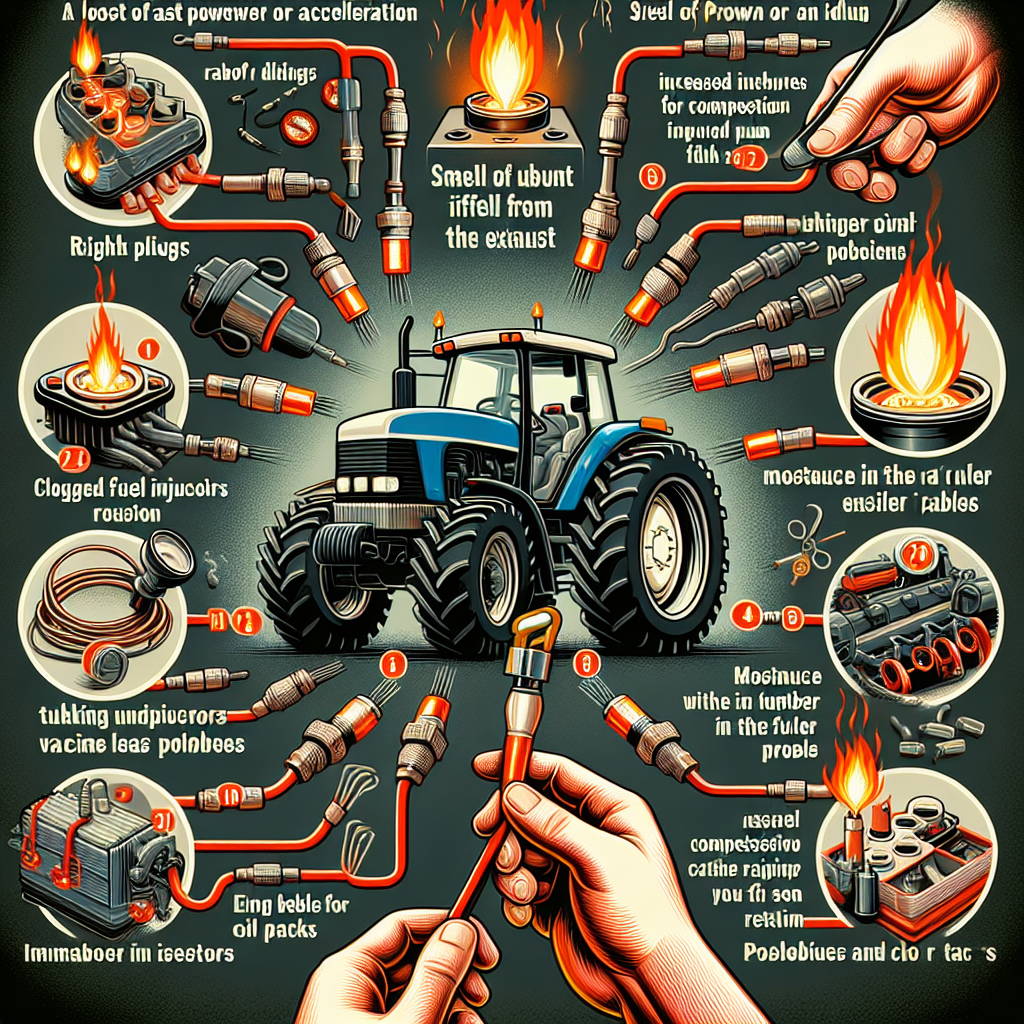
Engine misfires in Case IH Maxxum Series Tractors can be a significant issue that impacts performance, efficiency, and overall tractor health. Understanding the symptoms, causes, and troubleshooting steps can help you address these problems effectively. This guide aims to provide a comprehensive overview of engine misfires, including practical solutions, diagnostic tools, and preventive maintenance tips.
Symptoms of Engine Misfire
Identifying an engine misfire early can help prevent further damage to your tractor. Look out for the following symptoms:
- Loss of Power or Acceleration: The tractor struggles to gain speed or maintain power.
- Rough Idling or Shaking: The engine feels uneven when idling or running.
- Increased Fuel Consumption: A noticeable drop in fuel efficiency.
- Engine Check Light: The dashboard indicator light is illuminated.
- Smell of Unburned Fuel: A strong fuel odor emanating from the exhaust.
Possible Causes of Engine Misfire
Several factors can contribute to engine misfires in Case IH Maxxum Series Tractors:
- Faulty or worn spark plugs, ignition wires, or coil packs.
- Clogged or dirty fuel injectors.
- Vacuum leaks in the intake manifold or hoses.
- Issues with the fuel pump or fuel pressure regulator.
- EGR (Exhaust Gas Recirculation) valve malfunction.
- Faulty sensors, such as oxygen sensor, camshaft position sensor, or crankshaft position sensor.
- Ignition system problems, including distributor cap, rotor, or ignition module failure.
- Timing belt or chain issues.
- Water or moisture in the fuel system.
- Engine compression problems, such as worn piston rings or cylinder head gasket leaks.
Troubleshooting Steps
Follow these steps to diagnose and fix an engine misfire:
- Diagnostic Scan:
- Use an OBD-II scanner to identify fault codes related to engine misfires and sensor malfunctions.
- Ignition System Inspection:
- Inspect and test spark plugs, ignition wires, and coil packs.
- Replace any worn or faulty components.
- Fuel System Check:
- Evaluate fuel injectors, fuel pump, and pressure regulator.
- Clean or replace components as needed.
- Intake and Exhaust Systems Examination:
- Check the intake manifold and hoses for vacuum leaks.
- Inspect the EGR valve for proper operation.
- Compression Test:
- Perform a compression test to assess engine health.
- Address any issues with piston rings or cylinder head gasket leaks.
- Timing Components Inspection:
- Verify timing belt or chain tension and alignment.
- Adjust or replace if necessary.
- Reset ECU:
- Reset the engine control unit (ECU) to clear temporary faults and relearn settings.
- Test Drive:
- Test drive the tractor to verify the effectiveness of repairs.
Diagnostic Tools
Common diagnostic tools for troubleshooting engine misfires include:
- OBD-II Scanner:
- Identifies fault codes and sensor malfunctions.
- Compression Tester:
- Assesses engine compression levels.
- Fuel Pressure Gauge:
- Measures fuel pressure to ensure proper fuel delivery.
Preventive Maintenance Tips
Regular maintenance can help prevent engine misfires:
- Regularly inspect and replace spark plugs, ignition wires, and coil packs.
- Use high-quality fuel and consider periodic fuel system cleaning.
- Check the integrity of the intake manifold, hoses, and EGR valve.
- Follow the manufacturer's recommended maintenance schedule.
- Keep the engine well-tuned and at optimal operating temperature.
- Monitor and replace fuel and air filters as needed.
- Conduct regular diagnostic scans using an OBD-II scanner.
- Store the tractor in a dry, sheltered environment to prevent moisture-related issues.
Expert Quotes
John Deere Tractor Mechanic
"Routine maintenance and timely diagnostics are key to preventing engine misfires. Always listen to what your tractor is trying to tell you through performance changes and dashboard indicators."
Case IH Certified Technician
"Case IH Maxxum Series Tractors are robust machines, but like all equipment, they need proper care. Addressing minor issues before they escalate can save you time and money."
Agricultural Equipment Engineer
"Advanced diagnostic tools and a methodical approach to troubleshooting can make solving engine misfires much more manageable. Always start with the basics and work your way through systematically."
FAQs
What should I do if my tractor's engine check light comes on?
Perform a diagnostic scan using an OBD-II scanner to identify any fault codes and address them promptly.
How often should I replace spark plugs and ignition wires?
It's recommended to inspect and replace these components every 30,000 to 50,000 miles or as specified in your tractor's maintenance manual.
Can I use any fuel injector cleaner?
Use a fuel injector cleaner that is compatible with diesel engines and follow the manufacturer's instructions for best results.
What is the best way to store my tractor to prevent engine misfires?
Store your tractor in a dry, sheltered environment to prevent moisture buildup and corrosion.
How can I tell if my fuel injectors are clogged?
Symptoms of clogged fuel injectors include rough idling, engine misfires, and increased fuel consumption. Using a fuel system cleaner can help alleviate minor clogs.
For personalized assistance and expert advice, don’t hesitate to reach out to our certified technicians. Keeping your Case IH Maxxum Series Tractor in top shape ensures that it will serve you reliably for years to come.

